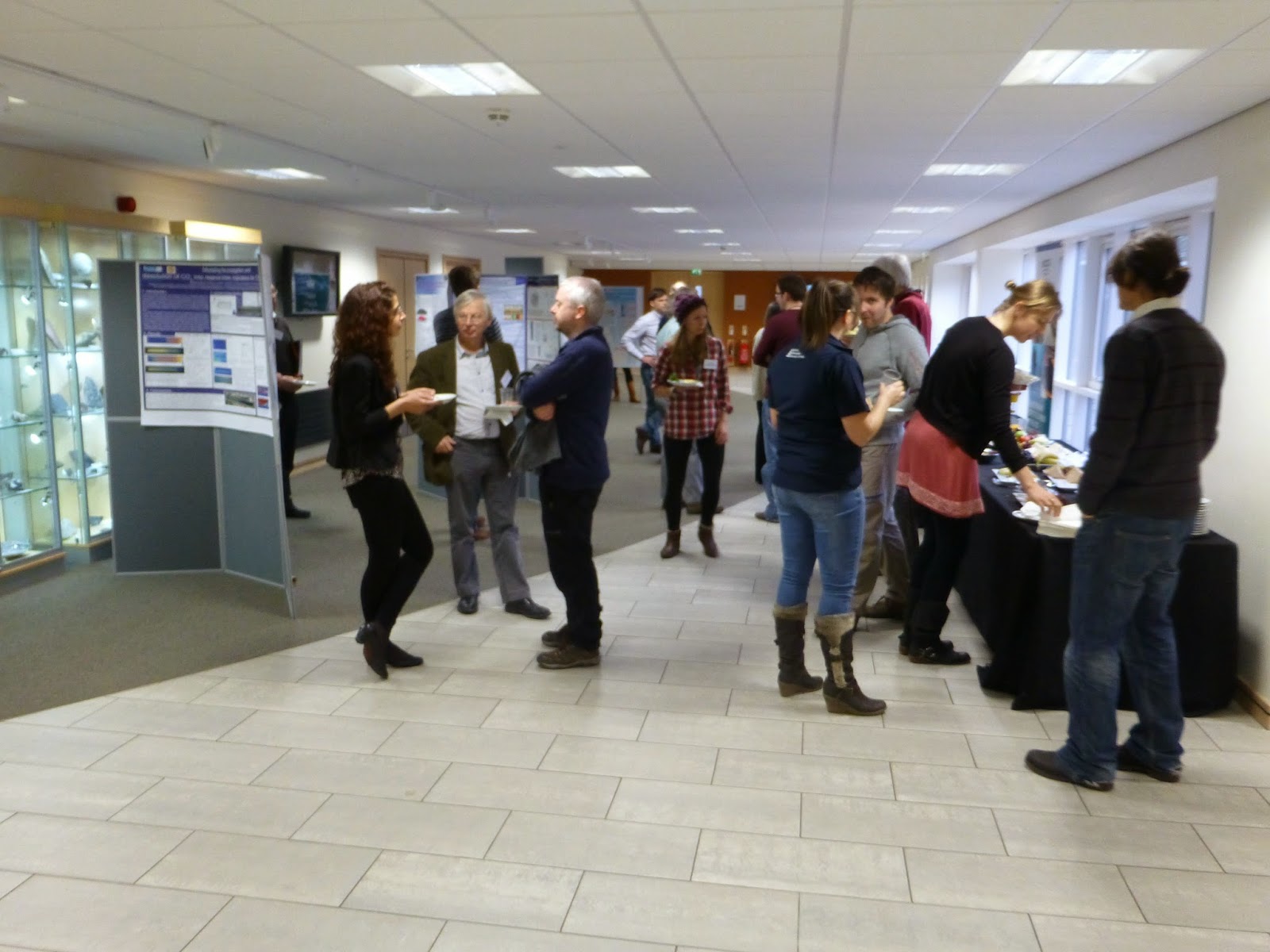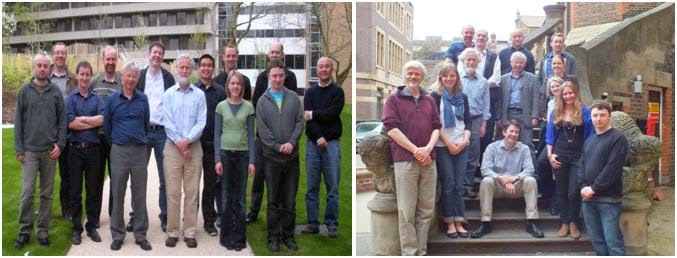Gemma Purser is an Analytical Geochemist working at our BGS Headquarters in Keyworth, Nottingham. In this post she details the happenings and successes of last months 'Geochemical processes during CO2 storage' meeting.
Recently the BGS hosted a meeting focused on geochemical processes related to the deep underground storage of carbon dioxide (CO2). This provided an opportunity for UK and European researchers to exchange knowledge as part of carbon capture and storage (CCS) technology. CCS aims to take carbon dioxide from point sources such as power stations and inject it underground into a formation where it can be stored instead of being released to the atmosphere as a way to mitigate climate change.
The meeting also provided an opportunity to showcase the work undertaken as part of CRIUS (carbon research into underground storage), a natural environmental research council (NERC) funded project. The CRIUS project is a consortium consisting of the BGS and the universities of Cambridge, Manchester and Leeds. CRIUS has over the past 6 years undertaken research to better understand the geochemical reactions that are likely to occur between CO2 and fluids and minerals within geological storage reservoirs.
The meeting held over two days opened with a poster session which saw a range of UK and international studies represented. The days then continued with seminars on natural CO2 analogues focusing on field scale geochemical observations from Greenriver, Utah, USA and Teapot dome, Wyoming (Mike Bickle, Cambridge and Niko Kampman, BGS/Lancaster). Focus then moved to reactions at the pore-scale and its impact upon porosity and permeability through the use of high pressure and temperature column experiments which demonstrated the dissolution and re-precipitation of mineral phases (Chris Rochelle, BGS) and the use of x-ray CT to highlight the changes in porosity and permeability due to geochemical reactions within sandstone cores (Benoit Lamy-Chappuis, Leeds) and the behaviour of supercritical CO2 within a pore system (Xianfeng Fan, Edinburgh). The first day closed with a networking meal in the heart of Nottingham followed by the obligatory pint or two which always has a natural tendency to get people talking about science into the early hours!
Day
two kicked off at looking at the role of noble gases as tracers as
applied to following CO2 and fluid migration in the field (Stuart Gilfillan, Edinburgh) and how laboratory experiments are critical in
deriving crucial new data on noble gas partitioning in a supercritical
CO2 phase and its application to predictive modelling (Oliver Warr, Oxford). Keeping with this theme and the requirements of generating
reliable data for predictive models, talks were given on mineral
reaction kinetics (Jorgen Rosenqvist, BGS; Panteha Bolourinejad, Uni. Of
Gronigen, Netherlands) also the lessons learned from the CRIUS project
and more importantly the unknowns and questions it has generated (Bruce Yardley, Leeds). A twist on the traditional CCS approach was showcased
with an energetic talk on the CARBFIX project, a field scale
demonstration project in which CO2 was injected into a basalt formation
onshore in Iceland which highlighted that in such systems geochemical
trapping is the dominant process that rapidly stores CO2. (Eric Olkers,
University College London). It is envisaged this technology will be a
useful way of combating Iceland’s CO2 emissions which are relatively
high on a per capita basis. The day closed with a talk highlighting the
future needs of CCS (Tony Espie, British Petroleum) and a discussion of
the role of geochemistry has in the implementation of CCS in the future.
The geochemical processes meeting represented a final farewell to the CRIUS project which is now in its completion stages. The project has seen the involvement and maturation of 6 PhD students, an Icelandic geothermal bathing session field trip and a few journeys stateside for fieldwork acclimatising to temperatures both well above and below the average UK geochemists optimum working temperature! The outputs have been many including presentations in the UK including at UKCCSRC (the UK Carbon Capture and Storage Research Centre) events and internationally at conferences such as European Geoscience Union, American Geophysists Union and Goldschmidt, and several papers in peer reviewed journals with more still awaiting submission. The key to all of this however is the close working relationships and collaboration that has been forged through working in a consortium, which has become the lasting legacy and biggest success of the project, which will help UK geochemists work together and develop new joint ideas well into the future.
By Gemma Purser
 |
| Poster session, BGS, Nottingham |
The meeting also provided an opportunity to showcase the work undertaken as part of CRIUS (carbon research into underground storage), a natural environmental research council (NERC) funded project. The CRIUS project is a consortium consisting of the BGS and the universities of Cambridge, Manchester and Leeds. CRIUS has over the past 6 years undertaken research to better understand the geochemical reactions that are likely to occur between CO2 and fluids and minerals within geological storage reservoirs.
 |
| Meeting dinner, BGS, Nottingham |
 |
| Bruce Yardley, University of Leeds, presenting work on mineral dissolution kinetics (top)& Eric Olkers presenting on the CARBFIX project (bottom) |
The geochemical processes meeting represented a final farewell to the CRIUS project which is now in its completion stages. The project has seen the involvement and maturation of 6 PhD students, an Icelandic geothermal bathing session field trip and a few journeys stateside for fieldwork acclimatising to temperatures both well above and below the average UK geochemists optimum working temperature! The outputs have been many including presentations in the UK including at UKCCSRC (the UK Carbon Capture and Storage Research Centre) events and internationally at conferences such as European Geoscience Union, American Geophysists Union and Goldschmidt, and several papers in peer reviewed journals with more still awaiting submission. The key to all of this however is the close working relationships and collaboration that has been forged through working in a consortium, which has become the lasting legacy and biggest success of the project, which will help UK geochemists work together and develop new joint ideas well into the future.
 |
| CRIUS project consortium, Iceland 2012 (as we are in the field!) |
 |
| CRIUS project consortium, Leeds 2010 (as we were then!) and Cambridge 2013 (as we are now!) |


Comments